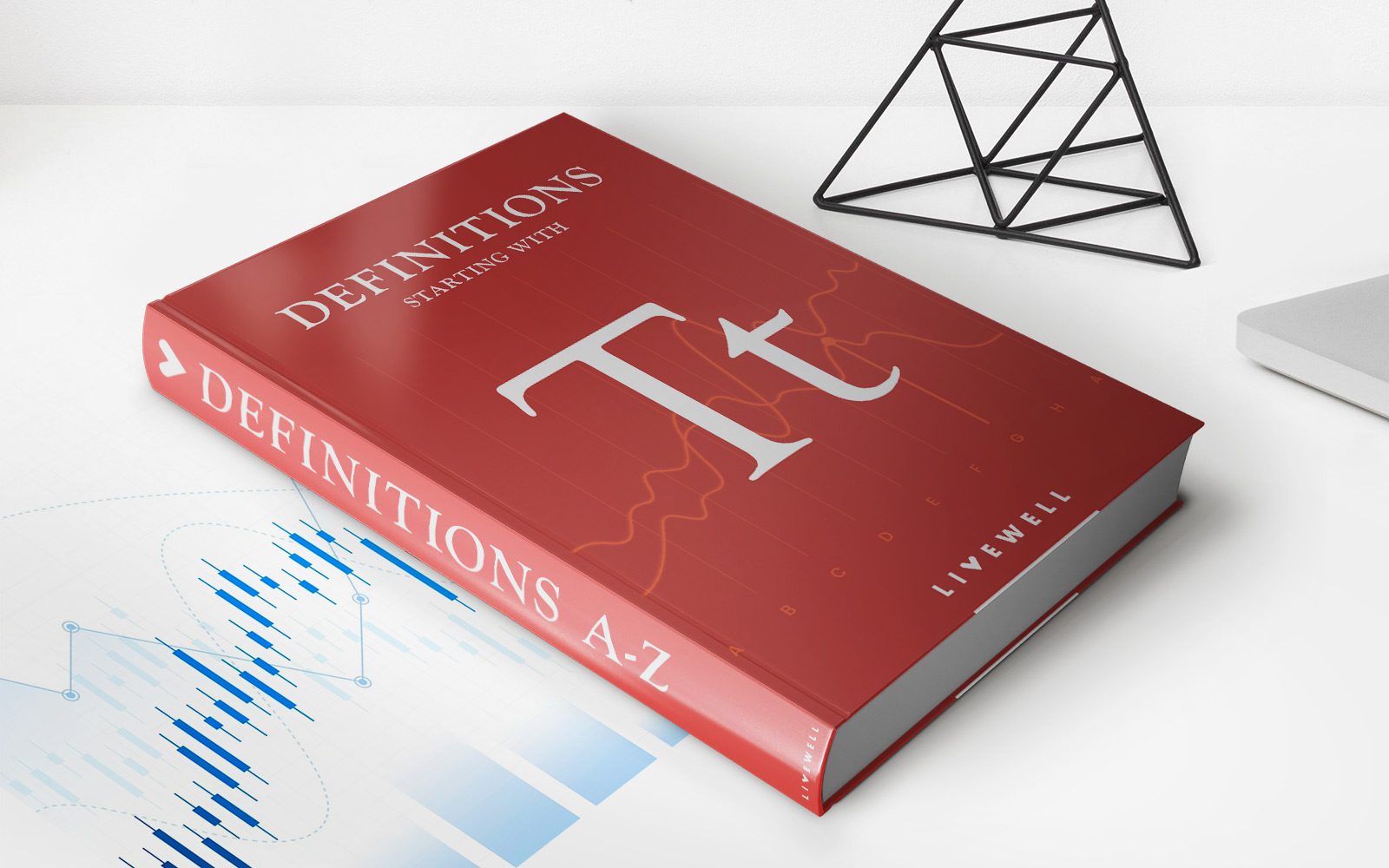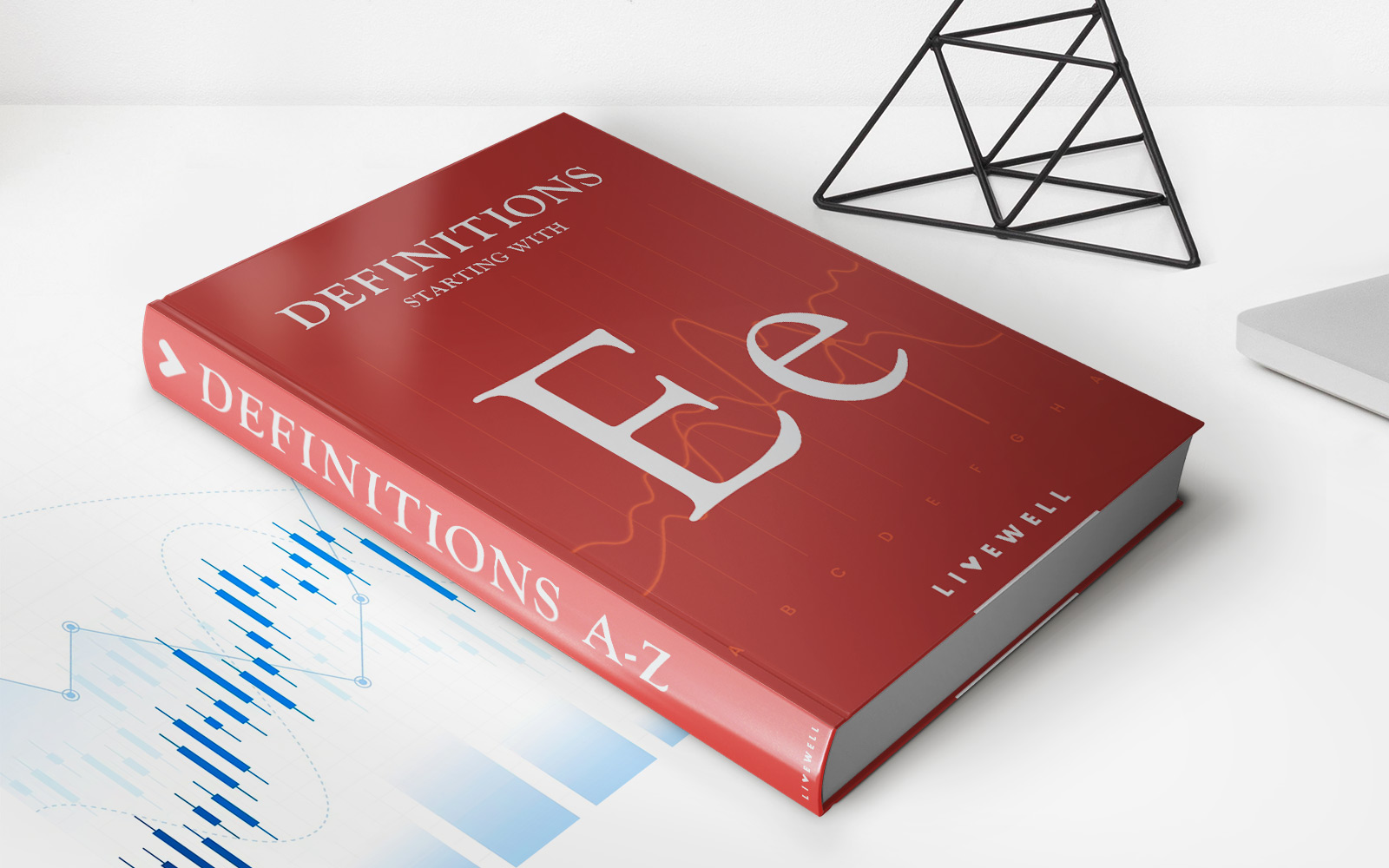

Finance
How Much Is Bond Insurance?
Published: November 18, 2023
Discover the cost of bond insurance with our comprehensive guide. Get the finance information you need to make informed decisions.
(Many of the links in this article redirect to a specific reviewed product. Your purchase of these products through affiliate links helps to generate commission for LiveWell, at no extra cost. Learn more)
Table of Contents
Introduction
Welcome to our comprehensive guide on bond insurance! If you’re curious about bond insurance or looking for information on how much it costs, you’ve come to the right place. Bond insurance is a financial tool that helps protect investors from potential losses in case the issuer of a bond defaults on payments. It provides an added layer of security and reassurance to bondholders, enticing them to invest in bonds that might otherwise be deemed risky.
In this article, we will delve into the world of bond insurance and explore the factors that influence its cost. We’ll also discuss the role of credit ratings in determining bond insurance rates and highlight various types of bond insurance policies. Additionally, we’ll provide some valuable tips for reducing bond insurance expenses to help you make informed decisions. So, let’s get started!
As an investor or issuer, understanding bond insurance is crucial. Whether you’re an individual investor, a municipal government, or a corporate entity, you need a comprehensive understanding of the costs and benefits associated with bond insurance. By examining the factors that affect bond insurance rates and exploring different types of policies, you can make informed decisions to protect your investments or meet the requirements of potential investors.
We’ll guide you through the intricacies of bond insurance costs and provide insights into the credit ratings system. Understanding how credit ratings affect bond insurance rates can help you gauge the financial stability and creditworthiness of issuers. We’ll also highlight tips on reducing bond insurance expenses. These practical suggestions can help you optimize the cost of bond insurance while still providing a level of protection that suits your needs.
So, whether you’re a seasoned investor or just starting your journey in the financial markets, this guide will equip you with the knowledge you need to make informed decisions about bond insurance costs. Let’s delve into the details and unravel the complexities of bond insurance together!
What is Bond Insurance?
Bond insurance is a form of financial protection that safeguards bondholders from potential losses in the event of default by the bond issuer. It provides an added layer of security by guaranteeing the timely payment of principal and interest to bondholders, even if the issuer faces financial difficulties.
When a bond issuer purchases bond insurance, they agree to pay a premium to an insurance company in exchange for the guarantee of payment. This insurance coverage provides reassurance to investors, making the bonds more attractive and potentially lowering the interest rate at which the bonds can be issued.
Bond insurance is commonly used by municipal governments and corporate entities to enhance their creditworthiness and access to capital. It gives them the ability to offer bonds with higher credit ratings, making it easier to attract investors and obtain financing at favorable terms.
For investors, bond insurance offers protection against default risk, a crucial factor in the decision-making process. With bond insurance, investors have greater confidence that they will receive both the principal amount and interest payments as scheduled, even if the issuer encounters financial difficulties.
Bond insurance can cover various types of bonds, including municipal bonds, corporate bonds, and even certain types of structured financial products. It is important to note that not all bonds are eligible for insurance coverage, and the insurance company will assess the creditworthiness of the bond issuer before providing coverage.
Overall, bond insurance acts as a risk mitigation tool, reducing the potential losses associated with investing in bonds. It provides peace of mind to both issuers and investors by ensuring timely and complete payment of principal and interest. By understanding the benefits and implications of bond insurance, market participants can make informed decisions and optimize their investment strategies.
Factors that Affect Bond Insurance Rates
When determining the cost of bond insurance, several factors come into play. Understanding these factors can help both issuers and investors assess the risk and set realistic expectations for bond insurance rates. Below are some key factors that influence bond insurance rates:
- Creditworthiness of the Issuer: The creditworthiness or financial stability of the bond issuer is a critical factor in determining bond insurance rates. Insurance companies assess the issuer’s ability to make timely payments based on their financial statements, credit history, and overall financial health.
- Credit Ratings: Bond insurance rates are closely tied to the credit ratings of the issuer. Higher credit ratings indicate a lower risk of default, leading to lower insurance premiums. Conversely, lower credit ratings imply a higher risk of default, resulting in higher insurance costs.
- Bond Structure and Terms: The structure and terms of the bond also impact bond insurance rates. Factors such as the maturity date, interest rate, coupon payment frequency, and call options influence the level of risk associated with the bond and subsequently affect the insurance premium.
- Market Conditions: The prevailing market conditions and interest rates play a role in determining bond insurance rates. When interest rates are low, insurance rates may be higher as investors seek safer options, driving up demand for bond insurance coverage. Conversely, in a high-interest-rate environment, bond insurance rates may be lower due to reduced demand.
- Issuer’s Industry and Sector: The industry and sector in which the issuer operates can impact bond insurance rates. Certain industries may be more susceptible to economic downturns or face specific risks, which can increase the cost of insurance coverage.
- Issuer’s Track Record: The issuer’s track record in meeting their financial obligations, including prior defaults or late payments, can influence bond insurance rates. A history of defaults or financial distress may result in higher insurance premiums.
It’s important to note that each insurance company may have its own methodology for determining bond insurance rates. Therefore, it’s advisable to consult with multiple insurers and compare their proposals to ensure a competitive rate. Additionally, the specific terms and conditions of the bond insurance policy will also impact the overall cost.
By considering these factors, market participants can better understand the pricing dynamics of bond insurance and make informed decisions regarding their investment strategies or bond issuances.
Evaluating the Cost of Bond Insurance
When evaluating the cost of bond insurance, it’s essential to consider various factors to ensure the coverage aligns with your needs and budget. Below are some key considerations when assessing the cost of bond insurance:
- Insurance Premium: The insurance premium is the primary cost associated with bond insurance. It’s typically expressed as a percentage of the bond’s principal value. Higher-risk bonds or issuers with lower credit ratings will generally have higher insurance premiums compared to lower-risk entities.
- Credit Ratings: The credit ratings of the bond issuer impact both the cost and availability of bond insurance. Higher-rated bonds will generally have lower insurance premiums, while lower-rated bonds may face higher costs or even difficulty obtaining insurance coverage.
- Duration of Coverage: The duration or term of the bond insurance policy is significant. Longer coverage terms typically involve higher premiums, as they extend the timeframe during which the insurance company is exposed to potential risks.
- Insurance Provider: Different insurance providers may offer varying rates for bond insurance. It’s crucial to research and compare quotes from multiple insurers to obtain a competitive premium while ensuring the insurer is reputable and financially stable.
- Type of Bond: The type of bond being insured can impact the cost. Municipal bonds, for example, may have different risk profiles compared to corporate bonds or structured financial products. This can influence the insurance premium offered by insurance providers.
- Deductibles and Coverage Limits: Some bond insurance policies may include deductibles or coverage limits, which can affect the cost. Higher deductibles or lower coverage limits may lead to lower premiums, but it’s essential to evaluate whether the provided coverage is sufficient to meet your needs.
- Market Conditions: Market conditions can indirectly impact the cost of bond insurance. During periods of economic uncertainty or market volatility, insurance providers may increase premiums to account for elevated risks.
When evaluating the cost of bond insurance, it’s prudent to assess the overall value proposition of the coverage. Consider the level of risk mitigation provided by the insurance policy, the creditworthiness of the issuer, the potential impact on the bond’s yield, and the overall affordability of the premiums.
Additionally, it’s important to review the terms and conditions of the insurance policy carefully. Understand the scope of coverage, any exclusions, and the claims process. It’s advisable to involve legal and financial experts to ensure a thorough evaluation and negotiate favorable terms.
Ultimately, evaluating the cost of bond insurance requires a comprehensive analysis of multiple factors. By carefully considering these factors and seeking competitive quotes from reputable insurers, you can make an informed decision that aligns with your risk appetite and investment goals.
The Role of Credit Ratings in Determining Bond Insurance Costs
Credit ratings play a significant role in determining bond insurance costs. These ratings provide an assessment of the creditworthiness and financial stability of issuers and bonds. Insurance companies consider the credit ratings as a key factor when determining the level of risk associated with providing bond insurance coverage. Here’s how credit ratings influence bond insurance costs:
Lower Risk, Lower Premiums: Bonds with higher credit ratings are perceived as lower risk by insurance companies. Bonds issued by entities with strong credit ratings indicate a high likelihood of timely payment of both principal and interest. As a result, these bonds are typically charged lower insurance premiums compared to bonds with lower credit ratings.
Higher Risk, Higher Premiums: Bonds with lower credit ratings or those issued by entities with a history of financial instability face a higher risk of default. Insurance companies take this increased risk into account and charge higher insurance premiums to compensate for the potential increased likelihood of claims on such bonds. These higher premiums help mitigate the risk taken on by the insurance company.
Credit Rating Agencies: Credit rating agencies, such as Standard & Poor’s, Moody’s, and Fitch Ratings, assign credit ratings to bond issuers and their respective bonds. These agencies conduct in-depth evaluations of an issuer’s financial health, credit history, and ability to meet its financial obligations.
Rating Categories: Credit ratings are assigned to various categories, such as AAA, AA, A, BBB, and below investment grade ratings like BB, B, CCC. Higher-rated bonds, such as those in the AAA category, generally receive the most favorable insurance premiums as they demonstrate a very low risk of default. In contrast, lower-rated bonds, especially those in the speculative grade or junk bond category, incur higher insurance costs due to their elevated risk profiles.
Rating Criteria: Credit rating agencies use a range of factors to evaluate the creditworthiness of issuers. These factors may include financial performance, debt levels, industry outlook, market conditions, and the issuer’s ability to generate consistent cash flows. The stronger the credit rating, the lower the perceived risk, leading to lower bond insurance costs.
Impact on Investor Confidence: Bond insurance also plays a vital role in boosting investor confidence. Higher credit ratings and the presence of bond insurance can attract a broader range of investors who may be more hesitant to invest in bonds without such protections. The assurance provided by bond insurance can enhance marketability and liquidity, potentially resulting in more competitive pricing for issuers.
It’s important to note that credit ratings are opinions provided by rating agencies and serve as a reference point for investors and insurers. Each agency may have its own rating methodologies and criteria. Insurers assess these ratings alongside other factors when determining the insurance premium. Consequently, it’s advisable to closely review the credit ratings assigned to bonds and engage with multiple insurers to obtain competitive quotes.
By understanding the role of credit ratings in determining bond insurance costs, issuers and investors can better appreciate the impact of creditworthiness on insurance premiums. Stronger credit ratings translate to lower insurance costs, thereby reducing the overall expenses associated with bond issuance and investment.
Understanding Different Types of Bond Insurance Policies
There are several different types of bond insurance policies available in the market. Understanding these options is crucial for both issuers and investors to select the most suitable coverage. Here are some common types of bond insurance policies:
- Traditional Bond Insurance: This is the most common type of bond insurance. It provides protection against the risk of default, ensuring that bondholders receive their principal and interest payments as scheduled. Traditional bond insurance is typically purchased by issuers to enhance their creditworthiness and attract investors. It is widely used for municipal bonds, corporate bonds, and various other types of bonds.
- Accelerated Payment Insurance: Accelerated payment insurance offers an additional layer of protection to bondholders. In case of default, this policy ensures the immediate repayment of the outstanding principal amount, accelerating the payment before the maturity date. This type of insurance can be especially appealing to investors who prioritize liquidity and want to mitigate the risk of delayed or missed payments.
- Make-Whole Insurance: Make-whole insurance provides coverage against bond call risk. If the issuer exercises its right to call the bonds before maturity, make-whole insurance compensates bondholders for any losses they may incur if interest rates have declined since the issuance of the bonds. This type of insurance protects against potential losses due to early redemption of bonds at a disadvantageous yield.
- Repayment Insurance: Repayment insurance, also known as principal-only insurance, focuses on protecting bondholders’ principal investment. In the event of default, this policy ensures that bondholders receive at least a portion of their initial investment back, even if interest payments are not fully realized. Repayment insurance is primarily utilized for higher-risk bonds or issuers.
- Political Risk Insurance: Political risk insurance provides coverage for bonds issued by foreign governments or entities in politically unstable regions. It protects against the risk of political events, such as government actions, expropriation, or currency inconvertibility, which could impact the timely payment of principal and interest. Political risk insurance provides an added layer of protection for investors in such markets.
It’s important to note that not all insurance companies offer every type of bond insurance policy. The availability of specific coverage options may vary based on the insurer’s specialization, market demand, and risk appetite.
When considering bond insurance policies, it’s crucial to carefully review the terms and conditions, including deductibles, coverage limits, and exclusions. Engaging with insurance professionals and legal experts can help ensure a comprehensive understanding of the policy and its implications. This allows issuers and investors to assess whether the coverage aligns with their specific needs and risk profiles.
By understanding the various types of bond insurance policies, market participants can select the most appropriate coverage to mitigate risk, enhance creditworthiness, and safeguard their investments.
Tips for Reducing Bond Insurance Expenses
Reducing bond insurance expenses can be beneficial for both issuers and investors. By implementing strategic measures, market participants can optimize the cost of bond insurance while still ensuring the necessary level of protection. Here are some tips for reducing bond insurance expenses:
- Improve Creditworthiness: Enhancing the creditworthiness of the bond issuer can lead to lower insurance premiums. Issuers can strive to improve their financial standing by maintaining a strong balance sheet, improving cash flow, diversifying revenue streams, and demonstrating a track record of timely debt payments.
- Enhance Credit Ratings: Strong credit ratings are key to securing competitive bond insurance rates. Issuers should proactively work to improve their credit ratings by engaging with credit rating agencies, providing transparent financial information, and implementing sound financial practices.
- Shop Around: Obtain quotes from multiple insurance providers to compare premiums and coverage terms. Shopping around allows issuers and investors to leverage competition in the market and potentially negotiate more favorable insurance rates.
- Consider Self-Insurance: In certain cases, issuers with a strong financial position may choose to self-insure their bonds instead of purchasing external bond insurance. By assuming the risk themselves, they can avoid insurance premiums altogether.
- Evaluate Deductibles and Coverage Limits: Adjusting deductibles and coverage limits can impact bond insurance costs. Higher deductibles or lower coverage limits generally result in lower premiums. However, it’s crucial to assess the potential impact on risk mitigation and ensure that the coverage remains adequate.
- Seek Lower-Risk Investments: Investing in lower-risk bonds can lead to lower insurance costs. By focusing on issuers with strong credit ratings and stable financial profiles, investors can reduce the perceived risk and potentially obtain more competitive insurance premiums.
- Monitor Market Conditions: Stay informed about prevailing market conditions and interest rate trends. Insurance premiums can be influenced by market dynamics, so timing the purchase of bond insurance during favorable market conditions may result in cost savings.
- Negotiate Terms and Conditions: Engage in discussions with insurance providers to negotiate favorable terms and conditions. This may include adjusting premium rates, coverage periods, or deductibles. A well-informed negotiation process can lead to potential cost reduction.
It’s important to strike a balance between cost optimization and maintaining adequate protection through bond insurance. Issuers and investors should carefully evaluate their risk appetite, financial capabilities, and desired level of coverage when implementing these cost-saving strategies.
Consulting with experienced financial advisors, insurance professionals, and legal experts can provide valuable insights and guidance in navigating the bond insurance landscape and implementing these cost-saving measures effectively.
By following these tips and actively managing bond insurance expenses, market participants can optimize their investment strategies and financial positions while still benefiting from the protection and reassurance provided by bond insurance.
Conclusion
Bond insurance is a valuable tool that provides protection and reassurance to both issuers and investors in the bond market. Understanding the factors that influence bond insurance costs is essential for making informed decisions about coverage. By considering the creditworthiness of the issuer, credit ratings, bond structure, market conditions, and the issuer’s track record, market participants can assess the level of risk and determine appropriate insurance rates.
Various types of bond insurance policies cater to different needs, such as traditional bond insurance, accelerated payment insurance, make-whole insurance, repayment insurance, and political risk insurance. Understanding the nuances of each policy type enables issuers and investors to select the most suitable coverage for their specific requirements.
While bond insurance provides valuable protection, reducing insurance expenses can be advantageous. Improving creditworthiness, enhancing credit ratings, shopping around for competitive quotes, considering self-insurance, evaluating deductibles and coverage limits, seeking lower-risk investments, monitoring market conditions, and negotiating favorable terms are all effective strategies to reduce bond insurance costs.
However, it’s essential to strike a balance between cost optimization and maintaining adequate protection. Careful evaluation of risk appetite, financial capabilities, and desired coverage is crucial in implementing these cost-saving measures effectively.
By incorporating these tips and engaging with experts in the field, both issuers and investors can navigate the world of bond insurance with confidence. The knowledge gained from this comprehensive guide empowers market participants to make informed decisions, protect their investments, and optimize the cost of bond insurance.
Remember, bond insurance can provide peace of mind, protection against default risk, and potentially favorable access to capital markets. Whether you’re a municipal government, a corporate entity, or an individual investor, understanding bond insurance and its cost implications is vital for achieving financial success.














